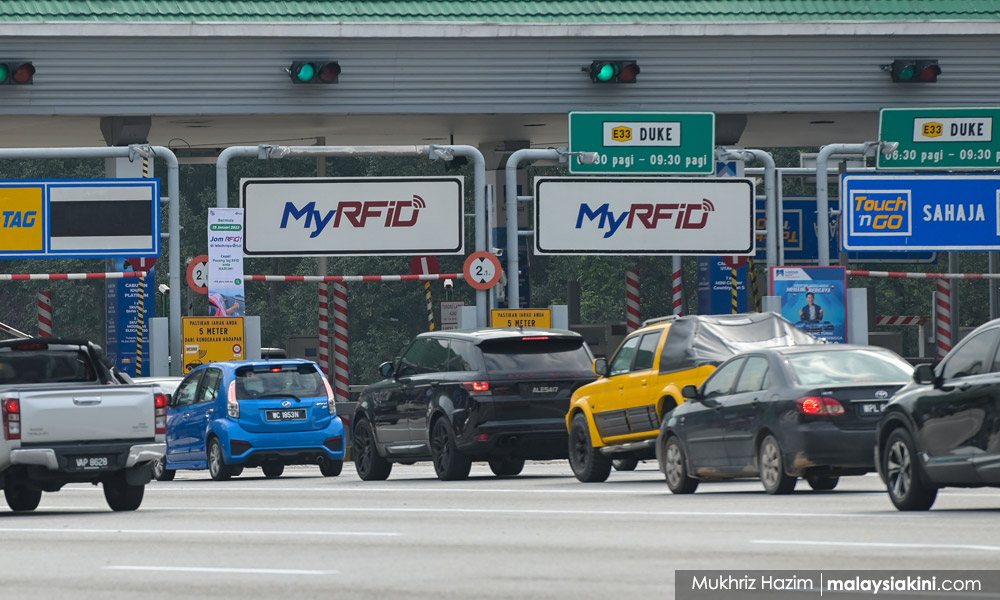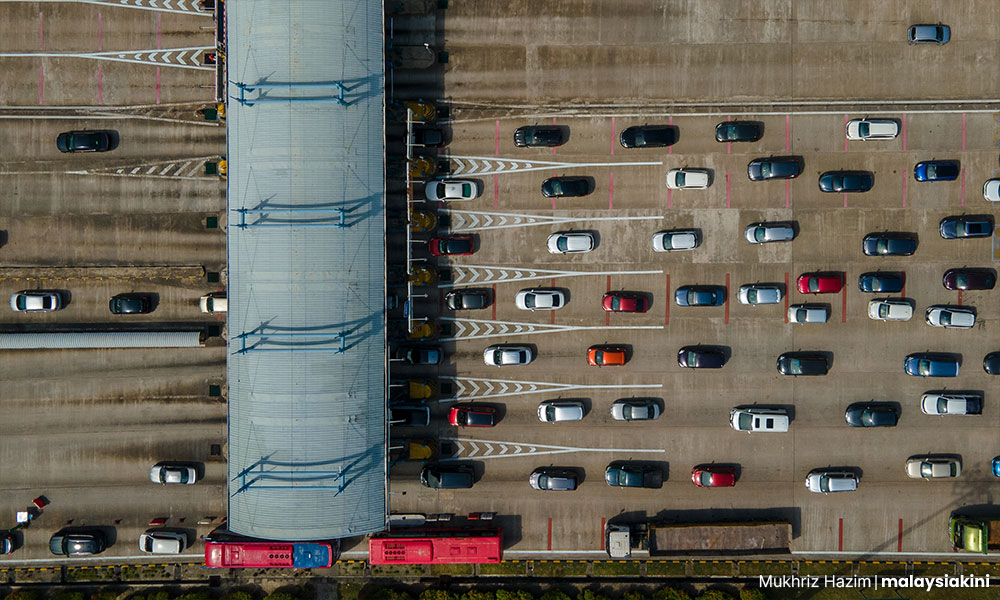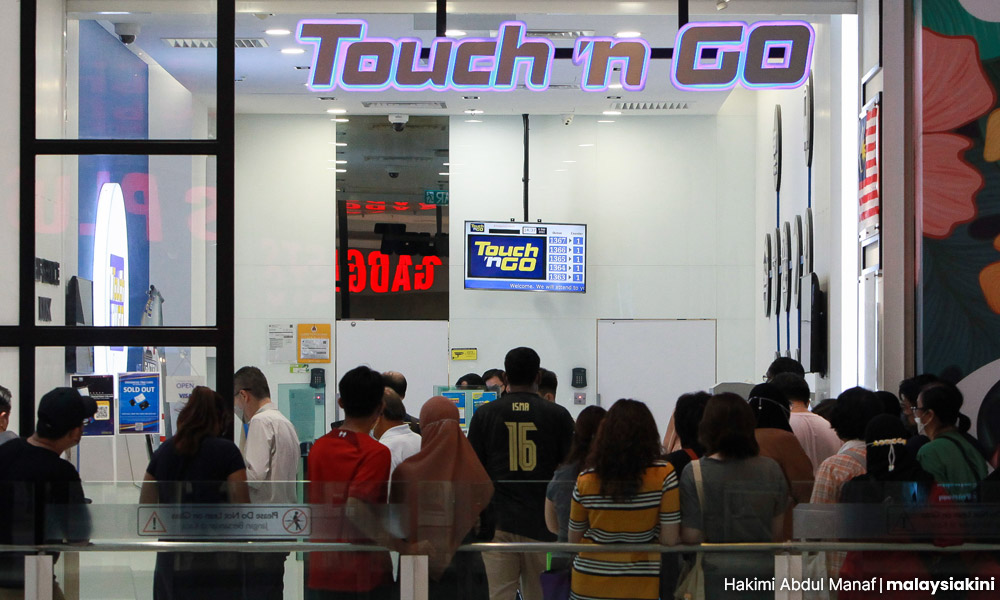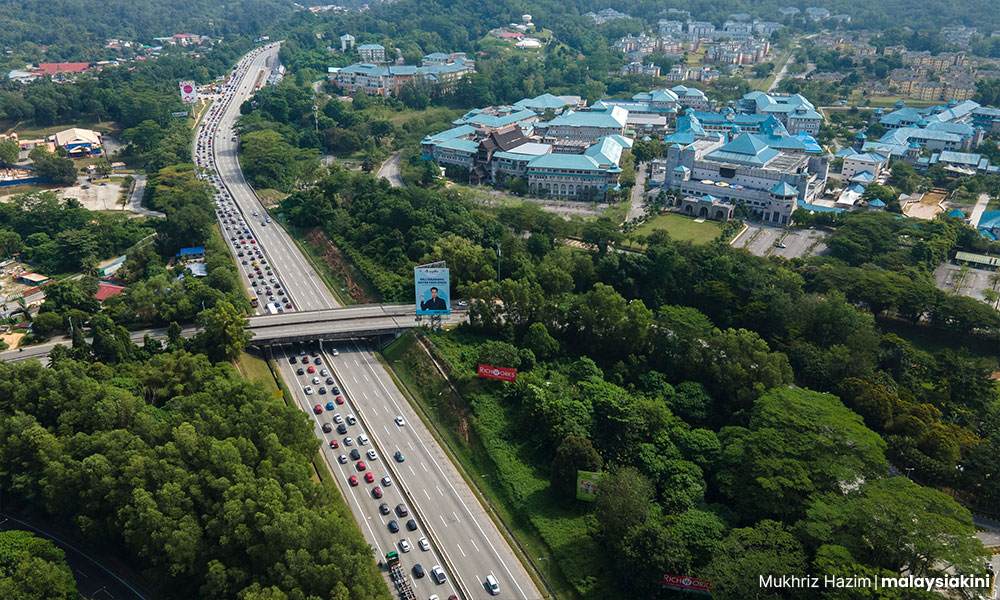Expressway operator Plus and a related company Touch ’n Go are jointly operating an archaic, monopolistic, needless payment system for tolls which could cost the driving public as much as RM270 million each year from card expiries alone in future.
And it keeps the payment system from progressing to something much more superior and which has the capacity to reduce traffic jams and eliminate toll booths throughout the country as has been done in some countries.
It is unthinkable they continue to do this, simultaneously stopping other toll operators in the country from progressing too. Part of the reason is an incestuous link between Plus, one of its major controlling shareholders, and Touch ’n Go.
National sovereign fund Khazanah Nasional, through UEM Group Bhd, owns 51 percent of Plus while the Employees Provident Fund (EPF) holds the remaining 49 percent. Touch ’n Go is wholly owned by banking entity CIMB Group which is in turn 24.7 percent owned by Khazanah, its largest single shareholder. That’s a horribly conflicted state of affairs.
A year ago, Touch ’n Go had 25 million active cards, 15 million Touch ’n Go eWallet users and 1.5 million radio-frequency identification (RFID) tags in its ecosystem, making it the largest such provider in Malaysia by far.

That’s no doubt due to the fact that you currently cannot travel the tolled highways in Malaysia without a Touch ’n Go card - cash has been eliminated and you can’t use credit cards. Because of a monopoly on highways, Touch ’n Go has made great strides - at the expense of the driving public.
My calculations (elaborated later) indicate that Touch ’n Go can make as much as RM190 million a year from expired cards alone. The new cards have an expiry period of seven years, 30 percent less (older cards have expiry period of 10 years), so earnings from expiries will go up some 43 percent or to over RM270 million per year in future, according to my back-of-the-envelope calculations.
Let me tell the story.
The other day I was driving from Setia Alam to the North-South Expressway operated by Plus for my usual regular trip into town. I moved into the SmartTag lane and lifted my tag up, only for the screen to indicate the card had expired.
What, an expired card when I just topped up RM100 and there was some RM80 left on it? How could that be? Why should there be an expiry date on it when it could still be topped up? Why was there no warning when it was going to expire?

I made my protests to the person who came up to my car window. Do you have another card, she asked. I said, no. She asked for my identity card. You could use that as your Touch ’n Go card and top up on the other side, she said. When I flashed my IC, the boom went up and I heaved a sigh of relief.
Next stop
Not wanting to argue anymore and to avoid a long line behind me, I acceded and headed towards the Damansara toll, my exit point, where I flashed my IC and an alarm went off which prompted a male attendant to saunter over to me.
Can I top up my old card here, I asked. You have to go to the Touch ’n Go office and do that as it is expired, he said. The lady at the other end had said I could give up my card and get a new one and get a refund online. So much trouble for something so small.
I remember, Plus’ major toll booths had an office to handle this but the gentleman said no more. He himself, he added, had three Touch ’n Go cards which were expired and could not be used anymore.
You could load the IC (which is also a Touch ’n Go card), he said but I explained that I use the SmartTag and I can't very well leave my IC there all the time. He was sympathetic. Yes, raise the complaint, he said. But meantime, if I settled in cash I could move through the gate, he said, which is what I did.
I found some cards in the glovebox and asked him to check if they could be used - one of them could be. And I used that for my trip back home later. When I reached home, I checked all three of my cards. At the back, in small letters, was the expiry month - 10/22 it said for the recently expired card.

I reflected a bit - let’s say Touch ’n Go had 30 million cards by now - it had 25 million a year ago - it is not an exorbitant figure considering you can no longer use cash on highways and the system does not permit credit cards.
On average some three million cards will expire every year, if the lifetime was 10 years. So here is my first question, why have an expiry date if the card is still okay? Mine certainly was, money could be uploaded.
Now, if three million cards expire every year, you have to replace them at a cost of RM10 each. That means RM30 million per year for Touch ’n Go, free without having to lift so much as a finger.
Let’s say you bought the RFID strip, which probably costs a few cents, you pay RM35 each (SmartTags are being phased out by the way). If one third of card expiries opted for RFIDs, that’s RM35 million more per year on one million expiries.
And then, the money remaining on the expired cards - one of the Plus people told me you get refunds online or go to their office, of which there are two in Kuala Lumpur to get the refunds. My three cards have some RM100 on them in total and for one of them you can’t see the registration number anymore. So you can’t do anything online.
If I don’t seek refunds, that’s RM100 down the drain but I have to go to a lot of trouble to retrieve it. Let’s assume a quarter of the cards expiring don’t go for refunds and each has RM50 on them. That’s 2.5 million cards multiplied by 50.
That works out to a cool RM125 million a year, making the total a humongous RM190 million (30+35+125) a year from card expiries alone! What a fantastic business!
Easy money
That’s not the end of the story. I got a new Touch ’n Go card by the way, and realised that it now expires in seven years, not 10. In the future, that indicates a 43 percent increase in the expiry rate per year and therefore a revenue 42 percent higher, or RM270 million, instead of RM190 million a year merely from expiries! Such easy money!
My second question, why can’t credit cards be allowed for payment on highways? Car parks are already using them. All the major tolled highways I have travelled through in the world have payments through credit cards. Why can’t highways in Malaysia?

If you don’t have a Touch ’n Go card, you can’t use highways in Malaysia. Why is that? Even the new RFID system which enables you to pass through a toll booth without having to flash a card or use the SmartTag, which is typically tied to Touch ‘n Go. Why do Plus and other highways permit this ridiculous monopoly and inconvenience to the public?
There is a much superior system. Some three years ago, I travelled through Norway on a driving trip using a rental car. I did not pass through a single toll booth, but when I returned the car, there was a charge for tolls.
They have a device installed on the car which automatically records charges for tolls. Surely something simple like that system can be installed, obviating the need for toll booths completely. Drivers can subscribe to such a system and pay monthly, much like electricity. So much simpler and I dare say cheaper.
And so, my final question: Plus, as the leading highway operator in Malaysia and one of the largest toll operators in the world, why can’t you simply install that system here, save yourself a lot of money and cut the apron strings off the incestuous relationship with Touch ’n Go?
And I have not even begun talking about the poor state of your highways and their maintenance yet. - Mkini
P GUNASEGARAM, a former editor at online and print news publications, and head of equity research, is an independent writer and analyst.
The views expressed here are those of the author/contributor and do not necessarily represent the views of MMKtT.




No comments:
Post a Comment
Note: Only a member of this blog may post a comment.